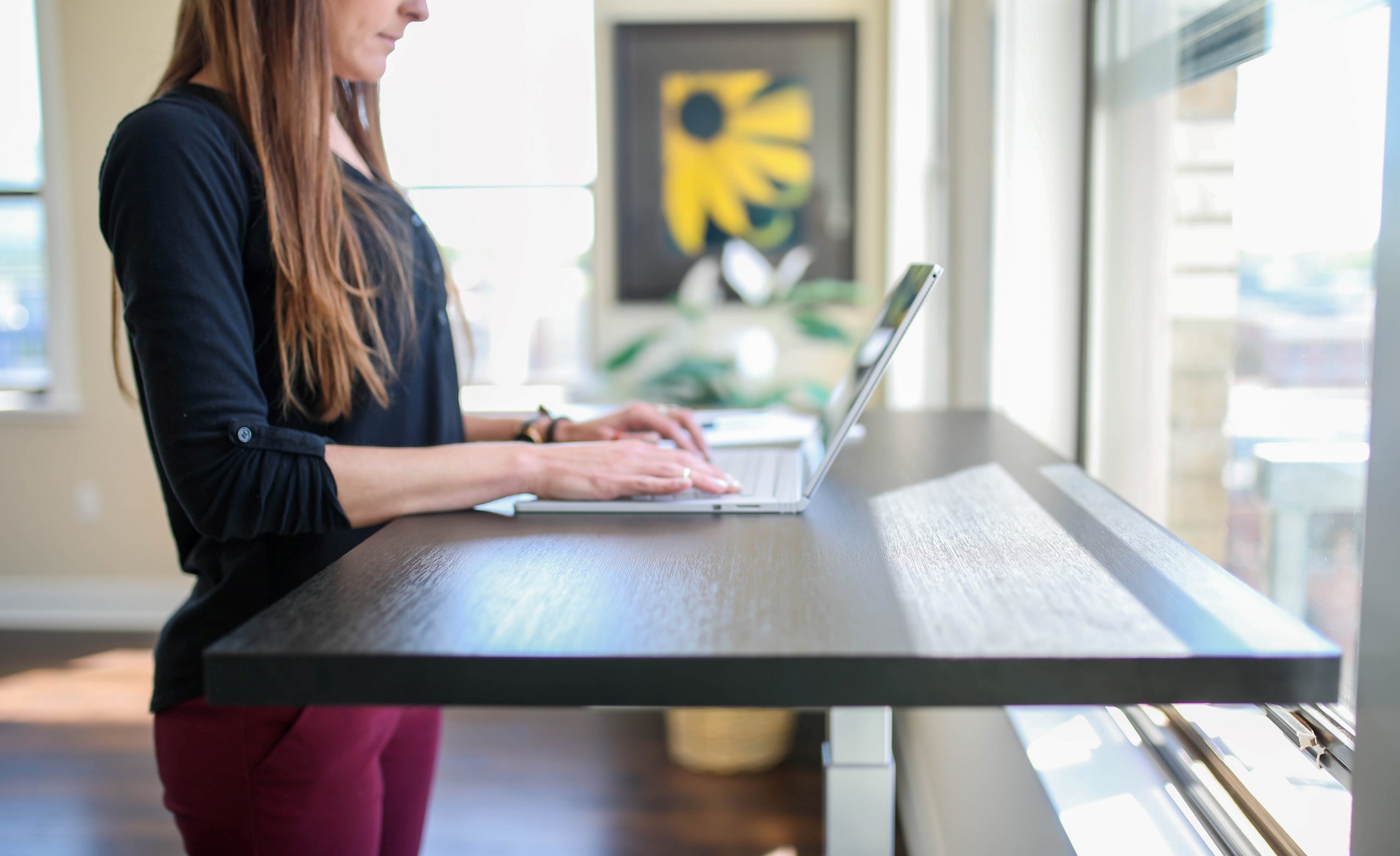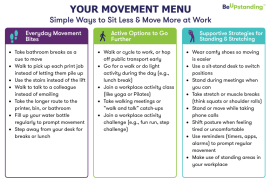One strategy that has been shown to result in substantial reductions in workplace sedentary time, particularly when accompanied by behaviour change programs like BeUpstanding, has been the use of sit-stand workstations. These workstations allow a user to shift between a sitting and standing posture while working on their computer. The popularity of sit-stand workstations in Australia has exploded, with a report showing a 400% increase in sales of sit-stand workstations since the start of the coronavirus pandemic, with over 90% delivered to home addresses. This phenomenon isn’t just restricted to Australia with a global market research report showing that sales of sit-stand workstations are expected to reach $2.8 billion by 2025.
To date, the majority of research on sit-stand workstations has been from the perspective of the user, i.e., the individual employee. However, it is also important to understand their use and implementation from the perspective of the decision maker responsible for their purchase. One of our outstanding BeUpstanding PhD candidates, Haroun Zerguine, has conducted research to address this evidence gap. His findings, which have been published in Applied Ergonomics (here and here), are summarised below.
What was done
The study included an online survey as well as interviews with a sub-sample of participants. The target group were individuals responsible for furniture purchasing decisions within their organisation. A total of 270 participants from over 200 organisations across Australia completed the survey, with participation from all 19 ABS industries. Interviews were conducted with 17 participants whose organisations had decided to invest in workstations, and 7 who had decided not to invest yet.
What was found
The survey found that 80% of organisations have already invested in sit-stand workstations with 40% of this group providing sit-stand workstations on request. However, over half provided no training on their appropriate use (51%) nor used any strategies to enhance their use (84%). The interviews revealed that participants who had invested in sit-stand workstations perceived them to be effective in reducing discomforts and increasing employee productivity and satisfaction. However, there was an identified need for education and ongoing monitoring to enhance the appropriate use and uptake of sit-stand workstations. Financial implications were the main reason cited for not investing in sit-stand workstations, with the need for better evidence on the return on investment highlighted.

Using your sit-stand workstation to BeUpstanding
Although sit-stand workstations are not a requirement to participate in BeUpstanding, the majority of teams taking part (83%) have sit-stand workstations for at least some of their staff. The BeUpstanding program helps to raise awareness and create the culture change to ensure that appropriate use of these desks (i.e., regularly changing between sitting and standing) becomes normative and habitual. Our research has shown that providing this additional support can result in much larger and more sustained behaviour change.
Quick tips for making the most of your sit-stand workstation
Mix it: Aim to alternate postures every 20-30 minutes. If you are just starting, take it slow with the standing until you get used to it.
Check it: Ensure that your workstation is correctly set-up in both sitting and standing position.
Leave it up: Put your workstation in the upright position before you leave the room.
Prompt it: If you are finding it tricky to remember to switch it up, set an automatic timer. You can see some recommendations for break reminder tools here.
Squat it: Take advantage of being upright and slip in some simple resistance activities while you are at desk, like mini squats, calf raises and kickbacks. These activities have shown to be beneficial for blood glucose and blood pressure.
Support it: Encourage your colleagues to use their desk in both the upright and seated position and role model this behaviour yourself.
![]()










Comments are closed.